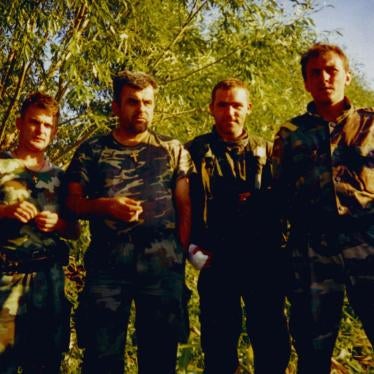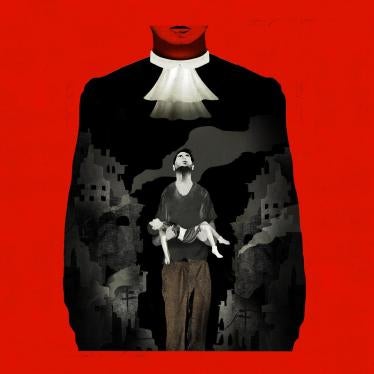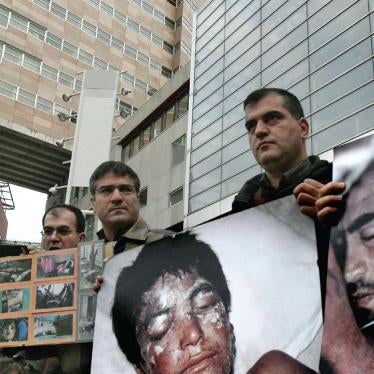On May 14, 1999, during NATO's air campaign against Yugoslavia, Serbian security forces descended on the small village of Cuska in western Kosovo. The armed men rounded up the villagers, all ethnic Albanians, killing some and demanding money and valuables from the rest. They herded groups of men into three houses and opened fire with machine guns before setting the houses on fire. Forty-one civilians died.
Human Rights Watch documented these war crimes and made its findings available to the Serbian government, prompting an investigation. This March - 11 years after the massacre - the Serbian police arrested 10 men accused of the crime, two of whom Human Rights Watch had named in a report. An eleventh man was arrested in Sweden, and 15 more are under investigation.
The arrests were a long time in coming for Senior Researcher Fred Abrahams, who investigated and wrote the report on the Cuska massacre. For years, he pressured the Serbian government to apprehend those responsible for crimes committed there.
The attack in Cuska was one example of the horrific war crimes committed across Kosovo in 1998-99. Serbian forces destroyed villages, expelled 800,000 ethnic Albanians, and killed roughly 10,000. Before and after the NATO bombing, ethnic Albanian forces killed many hundreds of Albanians and Serbs. The Cuska attacks were of particular interest to Abrahams, however, because of the powerful evidence the perpetrators left behind.
Three men survived the summary executions in the three houses. In one house, a man hid under the bodies of his brother and a neighbor. In the second house, a man was shot only in his legs and lay camouflaged in a pile of dead bodies. In the third house, a man crawled through a window to escape.
Abrahams found and interviewed these survivors, in addition to others from the village.
Abrahams then benefited from a rare find: photos of Serbian security forces from the area, in uniform with weapons, some standing in front of burning homes. The Cuska villagers recognized some of the men in the photographs and knew some by name.
"A good war crimes investigation is like piecing together a puzzle," said Abrahams. "With extensive research and a bit of good luck, we got a picture of what took place."
Abrahams presented the evidence in his 1999 report on the killings, "A Village Destroyed." The report named five alleged perpetrators of the Cuska massacre and of related killings in western Kosovo. Two of the men named and illustrated in the report with their photographs, Srecko Popovic and Slavisa Kastratovic, were among the men arrested in March 2010.
"More than ten years is a long time to wait," Abrahams said. The case of Cuska was not included in any of the Kosovo indictments brought by the United Nations-run International Criminal Tribunal for the former Yugoslavia. In Serbia, the government lacked the political will to arrest Serbs accused of war crimes during the wars in former Yugoslavia.
For 11 years, Human Rights Watch kept the story of Cuska alive.
Abrahams raised the village massacre with journalists and testified about the case at the UN war crimes tribunal in The Hague. When another suspect was discovered in Argentina in 2005, Abrahams tried to organize his extradition to Serbia, but the suspect died before that could happen. Since 1999, Human Rights Watch has urged the United Nations and European Union, which have administered Kosovo since the war, to arrest those responsible for war crimes - both Albanians and Serbs.
Abrahams said the recent arrests in the Cuska case are important because they will help bring justice to the families who have suffered.
"The arrests are so important for the victims' families," said Abrahams. "They're also cathartic for Serbia as it documents and comes to terms with many crimes from the war."







